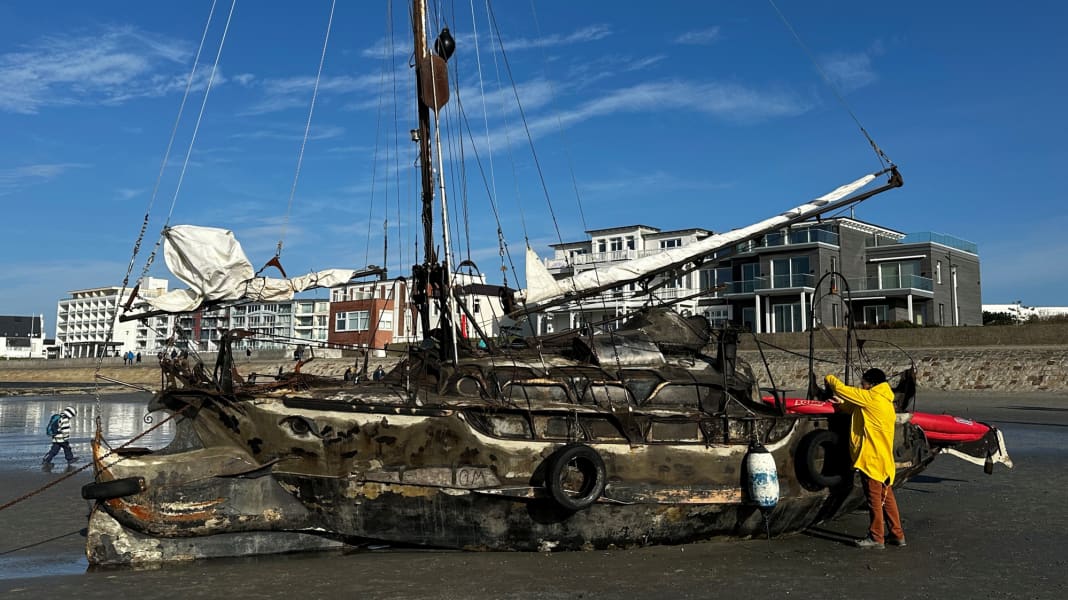
On a Sunday stroll through local harbours or an evening stroll on a sailing holiday, everyone has seen them. We're talking about ships that look more like abandoned pirate ships than well-maintained sports equipment. And with some of them, you wonder why they haven't gone to sea yet. When can, can and should a ship be prevented from sailing or even "taken out of service"?
Answers are provided by Benyamin Tanis, a lawyer specialising in yacht law.
How can we intervene at all?
Before we can answer the question of when, we must first address the "how". "SAFETY FIRST" can be read as an inscription on almost every merchant ship and also applies to private shipping. But every owner will certainly have their own answer to the question of the seaworthiness of their ship, not to mention aesthetic preferences. And there is (fortunately) no MOT for boats "yet". "Isn't CE conformity something like that?", one or the other will now ask. No, it's not! The CE conformity regulations are not an operating licence for recreational craft and do not generally have to be observed by private individuals.
In the absence of specific regulations, the state can therefore only intervene for so-called general emergency response. To this end, every federal state has a general emergency response provision in state law that authorises the authorities to intervene if public safety or the individual is threatened. And every lawyer will now recite the proportionality test they learnt in law school: "Any intervention must serve a legitimate purpose, be suitable for achieving this purpose, and be necessary and proportionate." To put it simply: whenever a ship poses a threat to the owner or public safety (environment or other people), the state has a duty to act.
As a rule, it is passers-by, harbour masters or berth neighbours who call the regulatory authorities to the scene. In Germany, responsibility lies with the harbour authorities of the municipalities or the Waterways and Shipping Office. The authority called upon then has the difficult task of deciding whether a detention order (a ban on leaving the harbour and possibly even an order to disembark) is necessary, suitable and appropriate. If the authority decides to act, it does so by means of an administrative act. And the person concerned can appeal against this.
When does "danger" emanate from a ship?
There are no rigid regulations for this either. It is certainly possible to speak of danger if a ship is not equipped or managed according to good seamanship, but this can rarely be recognised from the outside and at first glance. If a ship is in danger of sinking or is already in distress at sea, it can be considered dangerous. Mere questions of "good taste", on the other hand, are generally of no help. So it is often not so easy to judge when a ship is in "danger".
What other situations authorise the authorities to act?
The state can prevent a ship from leaving port not only in the event of imminent danger. Customs, tax or other debts of the owner or possessor can also lead to the confiscation of the boat. However, divorce disputes are much more frequently the trigger for sovereign intervention at the jetty.
What is it like in other countries?
Basically, the above applies to the entire EU area, with one or two special features of course. For example, it is often not immediately obvious whether the person acting is actually authorised to prevent a ship from leaving port. In southern Europe, it is not only the state law enforcement officers who wear a uniform, but also the employees of the local marina in case of doubt. This can make you wonder whether the harbour master's word is actually "law". A word of common sense and the local police can often help here.
So what to do when the state interferes?
Make sure that the decision is made in writing. This should not be a problem in Germany, but in other countries you should insist on this. This is because you can then lodge an appeal against the written decision. Please note that an appeal does not normally have a suspensive effect and the official decision must be observed first. A decision on your appeal against the official decision will then be made within a period of four to eight weeks. If the decision is not upheld, the only option is to take legal action. Above all, however, you should check and ask yourself whether there might actually be a reason for the unfavourable decision and whether this could perhaps be rectified quite simply. Safety deficiencies should always be rectified immediately, then it will also work with the neighbouring berth.

